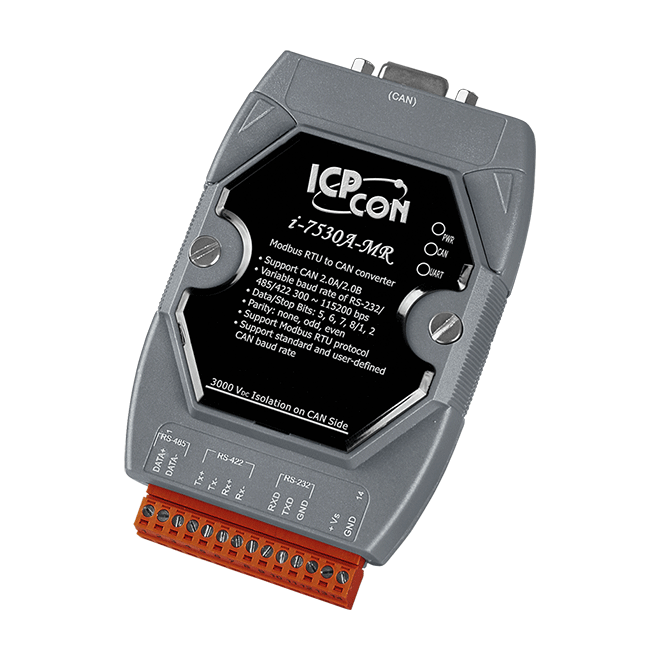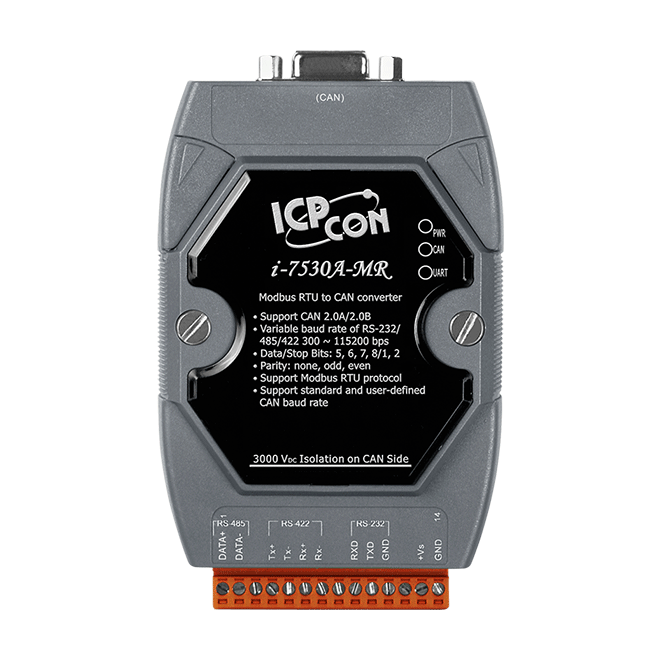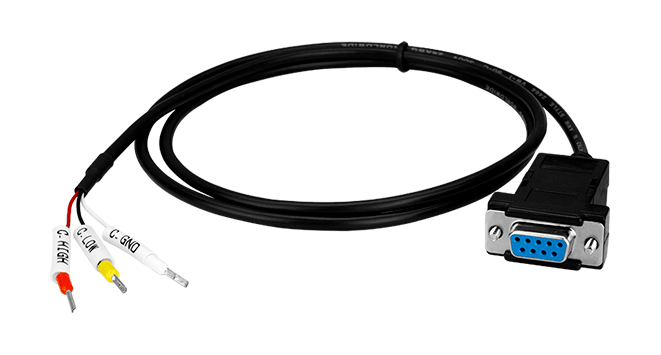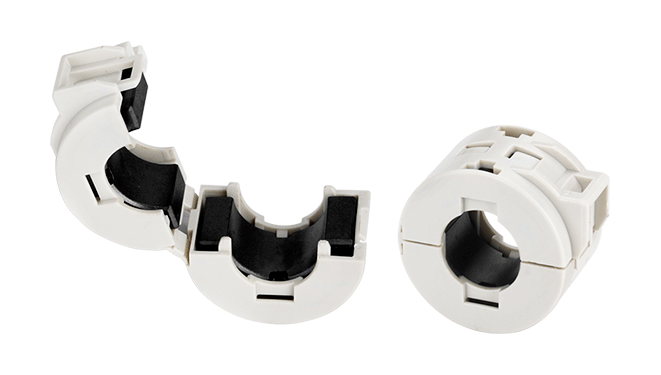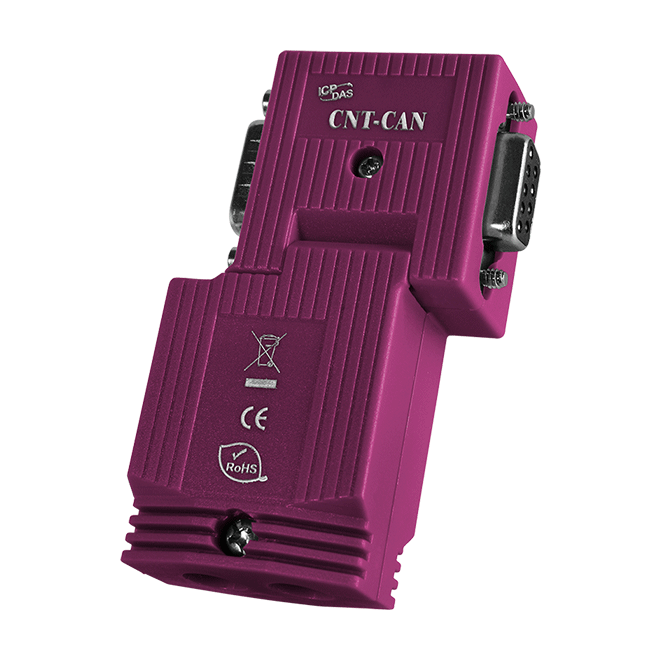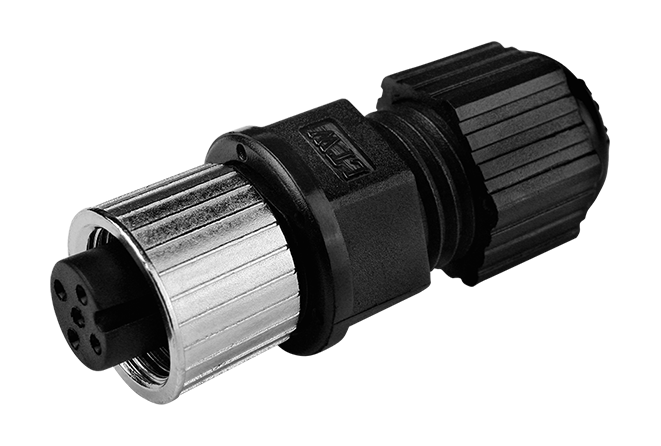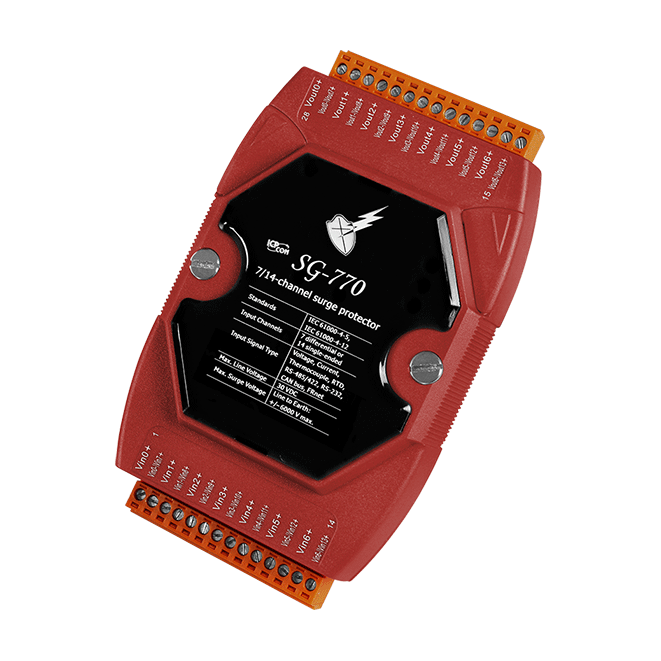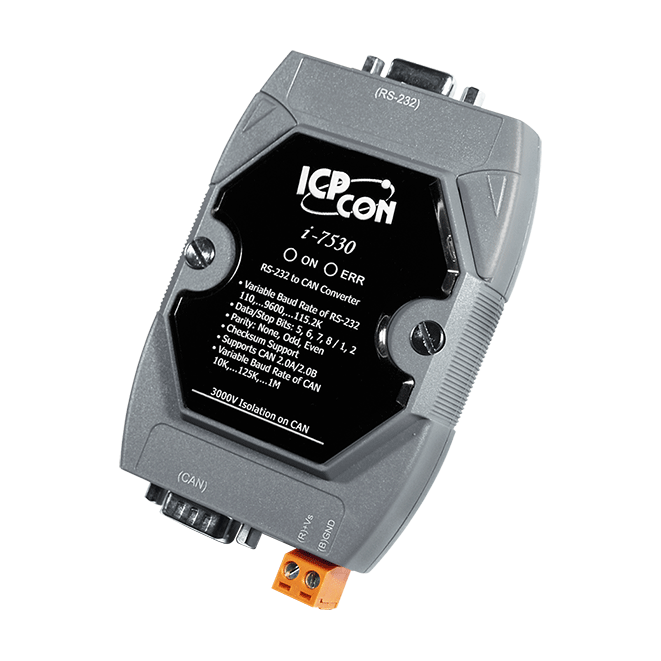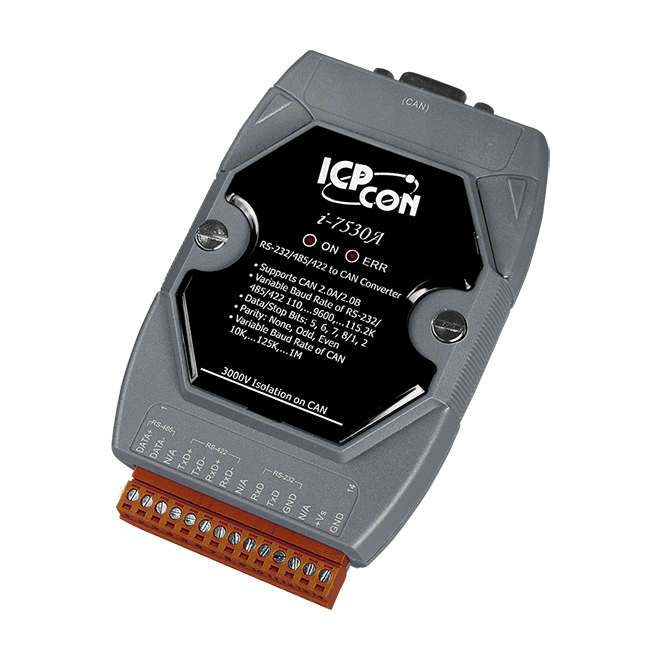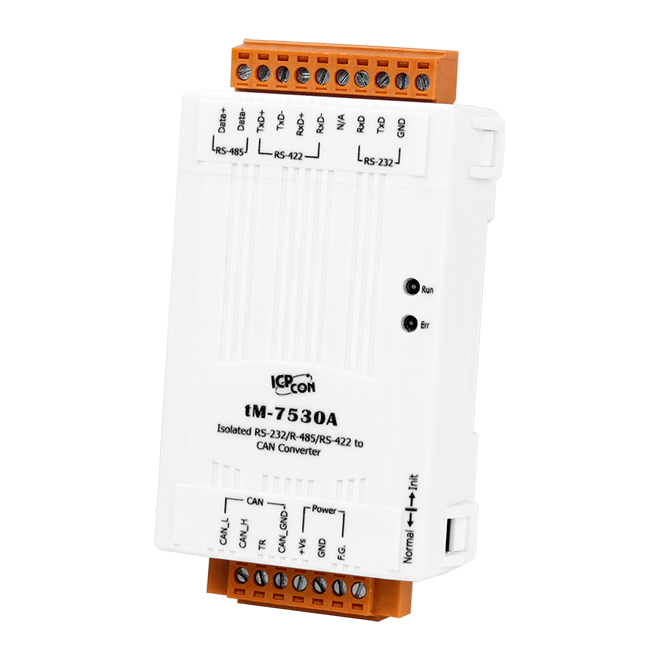I-7530A-MR-G
Introduction
The PLC, HMI and SCADA are popular in the various industrial control applications, but most of them don't provide CAN interfaces. Users always experienced difficulties due to connecting the sensors or actuators which only have a CAN interface. The basic function of I-7530A-MR is compatible with I-7530A, and the "MR" stands for "Modbus RTU". So, the I-7530A-MR supports Modbus RTU protocol in its RS-232/422/485 port. Modbus RTU is popular and widely supported by most of the PLCs, HMIs, and SCADAs. I-7530A-MR is helpful to use standard Modbus RTU protocol to access CAN networks without difficulties. And with the special designed firmware, beside normal received CAN message buffer, it offers special memory space to save up to 100 kinds of CAN messages which are urgent and must be processed immediately. The feature helps the PLC, HMI and SCADA to use Modbus RTU function code 3,4,16 to access CAN devices in a easy way. In Modbus RTU mode, it allows a Modbus RTU master to communicate with CAN devices on a CAN network. The following figure shows the application architecture of this mode.

In pair-connection mode, this module provides the pair connection and transparent communication between the RS-232/485/422 devices via CAN bus. The application architecture may be as follows.

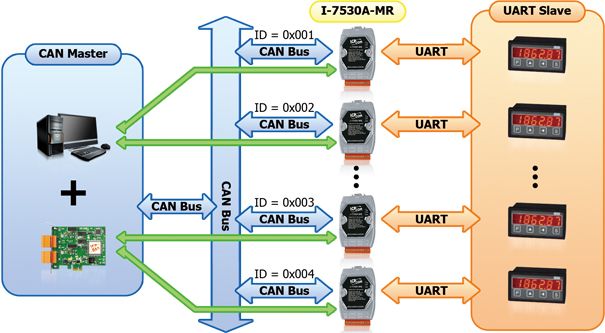
In the Modbus Master mode, it allows many Modbus RTU slaves to communicate with CAN devices on a CAN network. The following figure shows the application architecture in this mode. The Modbus master function can be supported in firmware version v1.11 or later.

Applications

- Control System
- Building Automation
- Factory Automation
- Distributed data acquisition
Ordering Information
| PRODUCT SERIES | DESCRIPTION | QNT. | INQUIRY |
|---|---|---|---|
Similar Products
| LED Indicators | |
|---|---|
| Status | 1 x Power 1 x CAN status 1 x UART status |
| COM Ports | |
|---|---|
| Ports | 1 x RS-232 1 x RS-485 1 x RS-422 (these ports can’t be used simultaneously) |
| Baud Rate | 300,600,1200, 2400, 4800, 9600, 19200, 38400, 57600, 115200, 230400 bps |
| CAN | |
|---|---|
| Ports | 1 |
| Baud Rate | 10 k ~ 1 M bps |
| Isolation | 3000 VDC for DC-to-DC, 2500 Vrms for photo-couple |
| Terminal Resistor | Selectable 120Ω terminal resistor by jumper |
| Specification | ISO-11898-2, CAN 2.0A and CAN 2.0B |
| Filter | Yes |
| Pin Assignment | C.I.A. DS-102 (CAN_H=7, CAN_L=2) |
| Power | |
|---|---|
| Input Range | +10 VDC ~ +30 VDC |
| Consumption | 1.5 W |
| Mechanical | |
|---|---|
| Casing | Plastic |
| Dimensions (mm) | 72 x 118 x 35 (W x L x H) |
| Installation | DIN-Rail |
| Environment | |
|---|---|
| Operating Temperature | -25 ~ +75 °C |
| Storage Temperature | -30 ~ +80 °C |
| Humidity | 10 ~ 90% RH, Non-condensing |
- CAN bus Baud Rate configuration
- CAN acceptance filter configuration
- CAN 2.0A or 2.0B specific selection
- RS-232/485/422 baud rate and data format configuration
- RS-232/485/422 communication with checksum function selection
- Communication mode setting
- Easily transmit/receive CAN messages

Performance Test
|
RS-232/422 full-duplex communication mode
|
|||
| CAN setting | RS-232/422 setting | RS-232/422 command length | The max frames/sec |
|---|---|---|---|
| 2.0B, 1Mbps | 115200,n,8,1 | 27 Bytes | 370 |
| 2.0B, 1Mbps | 230400,n,8,1 | 27 Bytes | 666 |
| 2.0B, 1Mbps | 460800,n,8,1 | 27 Bytes | 1250 |

